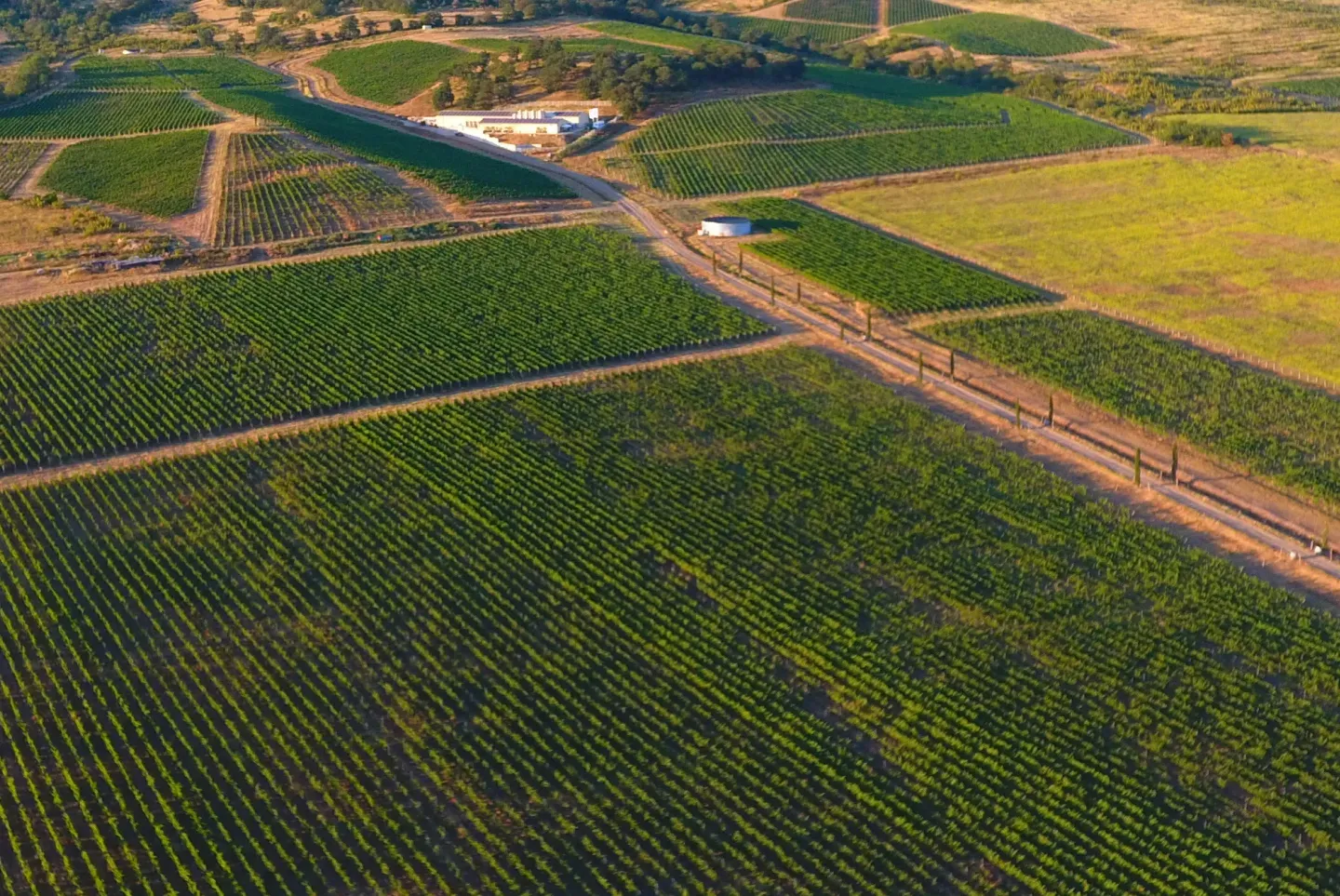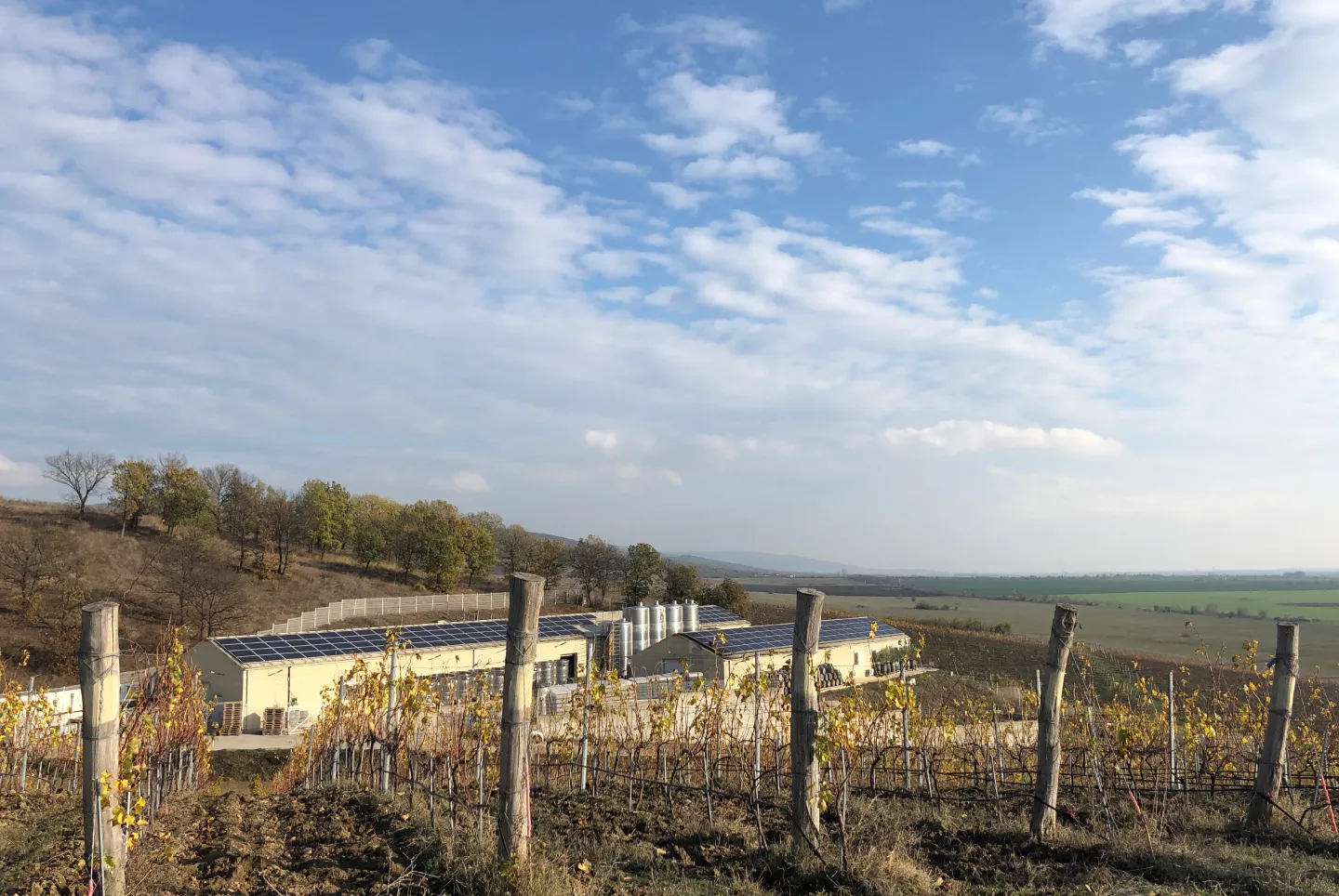

Wine Estate
Cellar
Santa Sarah Wine Estate is a self-contained ecosystem that is located on a scenic hill in the midst of vineyards, where flora, fauna, and human activity - working together in balance. The cellar is committed to sustainability and ethical responsibility by utilizing an autonomous island solution that makes it completely energy independent. It generates its own energy through natural sources, such as photovoltaic energy and is able to operate without contributing to the carbon footprint associated with traditional energy sources. The cellar has 4 drilled wells to access groundwater for both its production process and for watering the vineyards, which is often a more sustainable option compared to relying on surface water sources. It also has a modern wastewater treatment facility where the cellar emphasizes the commitment to environmental responsibility.
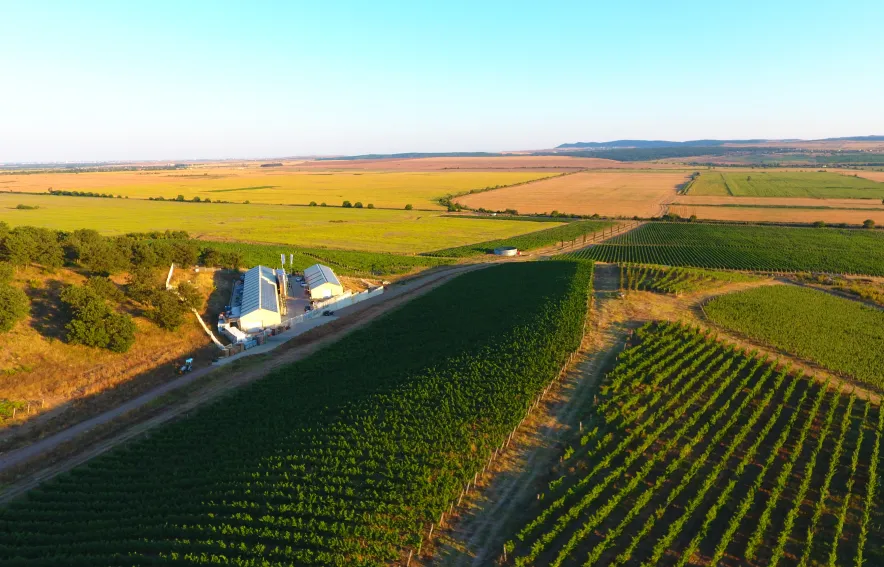
Energy-autonomous cellar, with its own water source and modern wastewater treatment facility
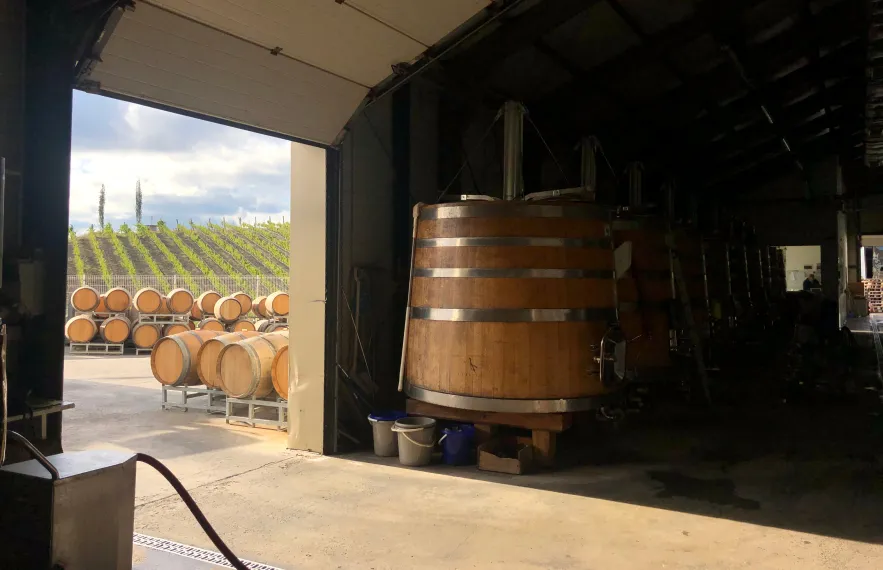
Cellar is located in the center of the vineyards, which allows quick harvesting of the grapes
Harvest is from the last week of August to the first week of November. The grapes are selected early in the morning by hand, in small cases of ten kilograms. The fact that the cellar is no more than 800 m from the vineyards allows the grapes to be transported quickly, which is important for preserving their freshness and quality. The use of gravity and temperature control during the reception of the grapes and musts helps to minimize any damage to the grape juice that could occur during the processing stage. The grapes are gently pressed, which is equivalent to the force of a handshake between friends. Immediately after this process, the cases used for harvesting are washed with fresh well water. Furthermore, the thorough cleaning of all vessels and equipment used in the winemaking process ensures that any potential sources of contamination are eliminated.
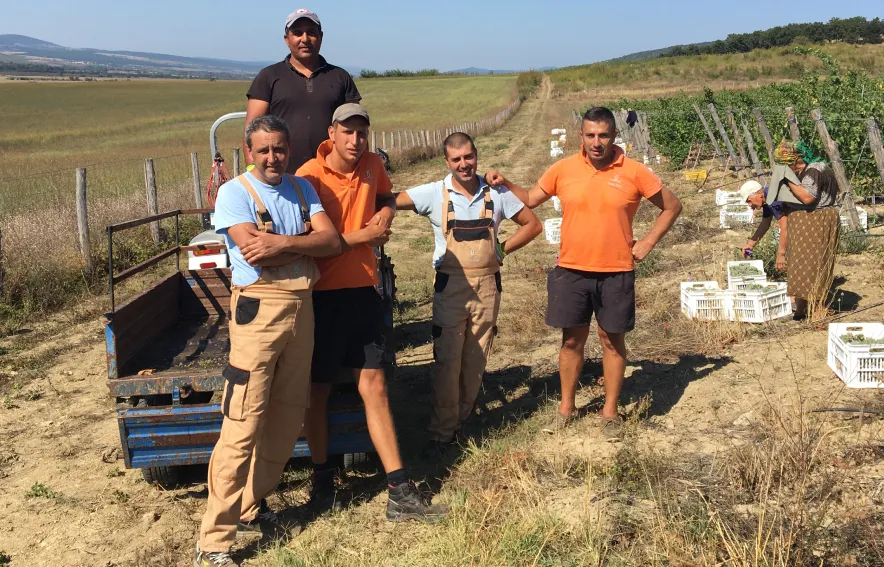
Harvest season 2017: Оur hardworking and cooperative team of boys
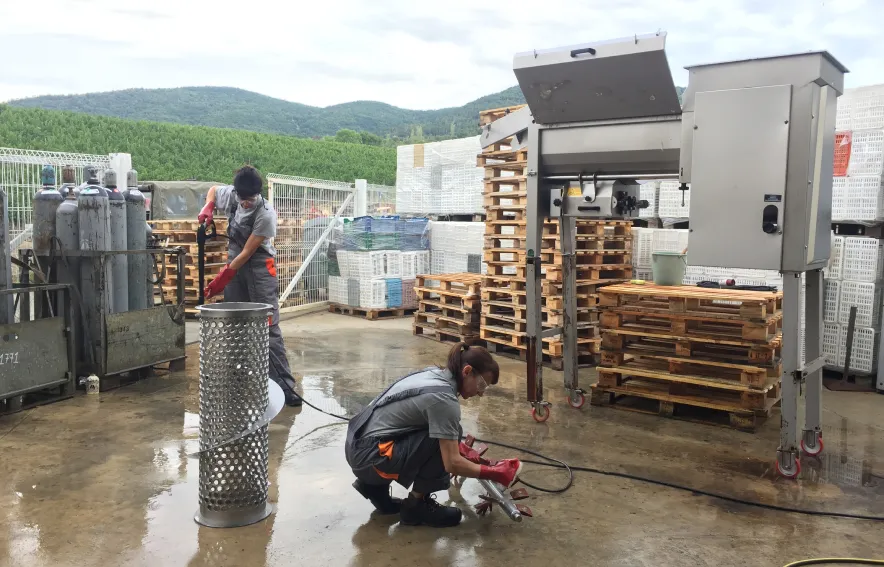
Cleaning of all vessels and equipment in the cellar
The estate places a strong emphasis on the vinification process, which involves the transformation of grape juice into wine. Fermenting white and rosé musts at a cool, but not cold, temperature for 3 weeks is important for preserving the flavors of the grapes and ensuring that the wine has the desired characteristics. The use of small stainless-steel containers and egg-type reinforced concrete vessels for fermentation also suggests that the winery is focused on precision and attention to detail in its winemaking processes. Santa Sarah is using different techniques for fermenting red wines in order to achieve more complexity and structure where the grapes are fermented warm, but not hot, for a period of 4 weeks, in stainless steel tanks and wooden vessels made from French, German and Austrian oak. The estate takes a precise and detailed approach to winemaking, with a focus on preserving the unique characteristics of each grape variety and parcel of land. By vinifying each parcel and grape variety separately in small vessels of 10 to 50 hectoliters, the estate is able to exercise greater control over the fermentation process, which can have a significant impact on the final flavor profile of the wine. This approach requires more effort and manual labour, but allows to experiment with different techniques and technologies that can be tailored to the specific characteristics of each parcel.
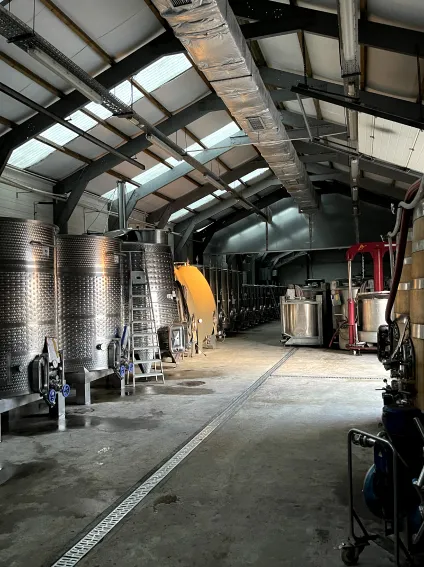
Vessels for fermentation of white and rosé musts
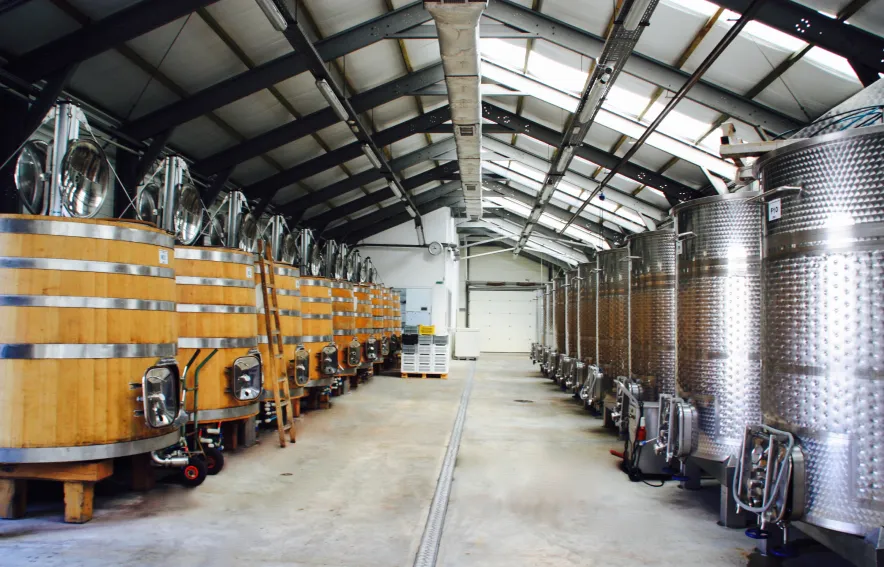
Wooden and stainless steel vessels for the fermentation of red grapes
The malolactic fermentation takes place in used French oak barrels of 225 liters over a period of about 3-4 weeks. To further expand, the ageing process of the white and rosé wines includes leaving them on the fine lees (dead yeast cells) for 3 to 5 months in stainless steel vessels. This helps to enhance the wine's aroma, flavour, and texture. As for the red wines, they are aged for a longer period of 10 to 18 months in French oak barriques, with 90% of the barrels being used and 10% being new. After bottling, the bottles are stored for some time in a standing position. This gives the corks the opportunity to relax again without contact with the wine.
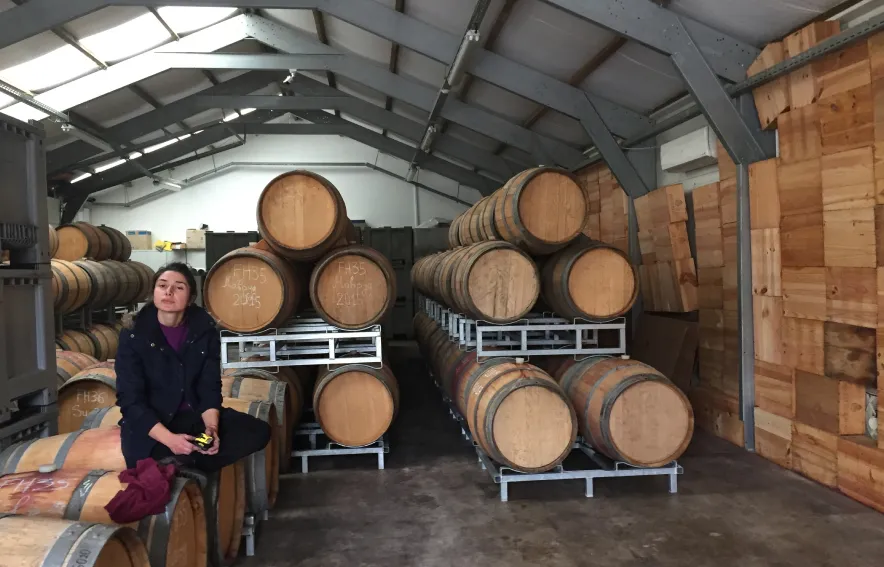
Arrangement of barrels in the aging room
